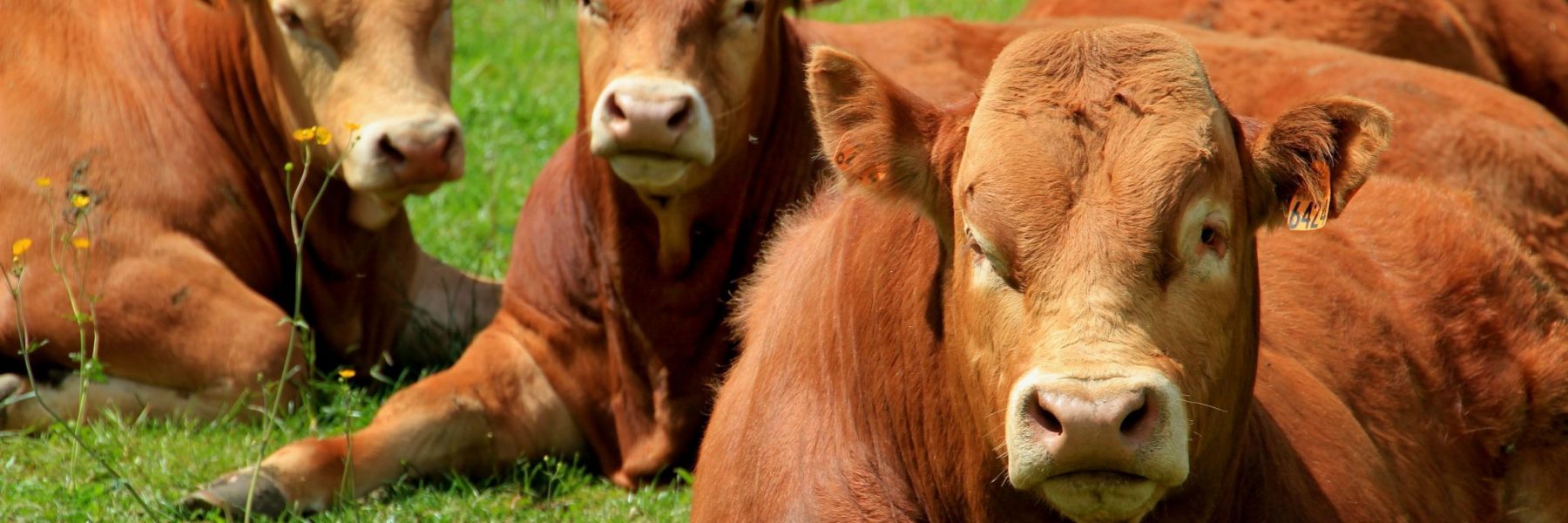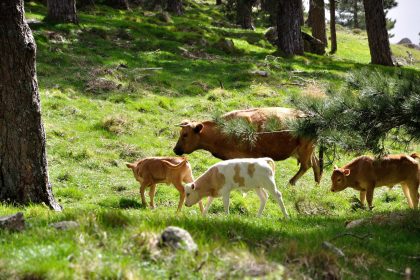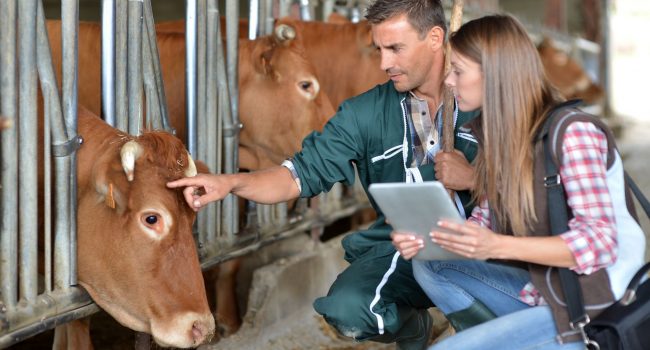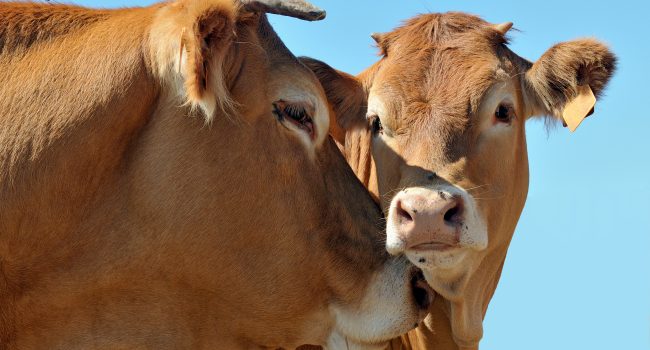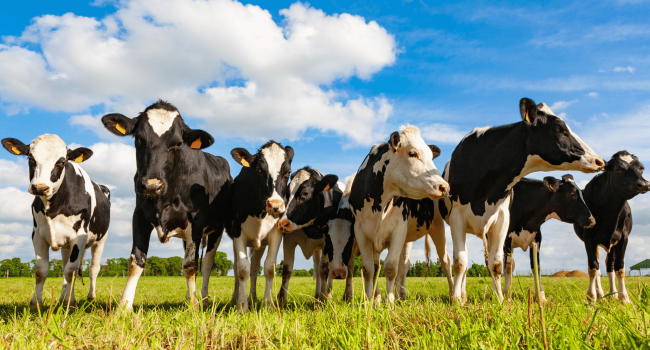The early growing phase of a heifer should be considered as one of the most critical phases of her life, with potential impact on growth and production for years to come. Several scientific publications have proven the positive relationship between early phases of heifer rearing and performances of the mature cow. For example, a famous meta-analysis of Soberon & Van Amburgh has concluded that ‘for every kilogram of pre-weaning average daily gain, calves produced 1,551kg more milk during first lactation’.
The pre-weaning period is so crucial because it is a period of development for the organs. No compensatory growth occurs during this time. If a delay is experienced during this formative period, it cannot be recovered and that potential is gone for good. If the rumen does not develop well at that time, its mature size might be affected, as well as the intake capacity of the mature cow.
This phenomenon is even more critical with modern high genetics HF cows: genetic potential must be expressed not to remain virtual. Early growth is also an important factor to reduce the age at first calving. Earlier calving is a very efficient way to reduce the cost of heifer rearing. In fact, reducing the heifer raising period from 24 months to 23 months saves approximately $93 per heifer.
If the early phases of heifer development are not well managed, a part of their potential will be erased. This will lead to disappointment and loss of income for the farmer.
Calf starter is essential for rumen development
Calf starter plays a major role in this pre-weaning phase. When milk bypasses the rumen and goes directly in the abomasum, calf starter reaches it and initiates fermentation. This has a strong positive effect on establishing the rumen microbial population, which is so important for ruminants. Those fermentations produce volatile fatty acids, which are absorbed through the rumen wall and thus stimulate early development of rumen papillae.
Classic trials at Cornell University have shown that concentrate promotes this development, while forage has almost no effect. The formulation of calf starter should be designed to promote rumen development, including a specific selection of nutrients. Micro-nutrients, such as vitamins, trace elements and antioxidants, favor good immunity and vitality of calves. The objective of this formulation is also to prepare the transition after weaning, which is a critical period and source of stress for the calf.
Palatability is also a key factor of success for calf starter. The use of a powerful sweetener is key to stimulate the intake of calf starter, as calves are sensitive to taste and enjoy sweetness. They indeed have a large number of taste buds (see Table 1). This preference for sweetness could reflect a strategy to obtain dietary energy.
Table showing the number of taste buds in chickens, pigeons, cats, dogs, humans, pigs and goats, rabbits and calves by Kare, 1966
Table 1: The number of taste buds of different species (Kare, 1966)
High quality milk replacer eases weaning transition
The use of a good quality milk replacer remains the best option for the dairy farmer in a ‘normal’ market situation. As modern Holstein cows have been intensively selected for decades, their milk is probably no longer the best meal for young dairy calves that must be weaned early. For example, the fat-protein ratio and balance of micro-nutrients is not optimal for them.
A good quality milk replacer should be highly digestible, well balanced in amino acids and trace-elements, highly palatable and free from antinutritional factors. It should also help promote the early consumption of solid feed, which is the golden criterion for smooth weaning.
The use of soluble milk proteins allows smooth curds in the abomasum and quick digestion of milk. It therefore promotes the appetite for solid feed. To provide high security and compensate for comparatively lower production of lactic acid in the abomasum than high casein milk, a combination of organic acids allows the pH in the intestine to decrease and prevent the development of bacteria.
Targets of a calf-heifer program
A good calf-heifer development program aims to improve heifer health by decreasing digestive issues, optimize growth by fulfilling nutritional requirements, and foster rumen development. The objectives of the farmers can be more specific and may include things like a desire for early weaning, time and money savings, and/or maximum performance in accordance with premium quality genetics.
ADM experts have considered all the important points for a successful rearing phase of dairy heifers. Through their Nursy programs, they offer different options to dairy farmers. These options depend on the strategy they wish to adopt. Nursy nutritional programs propose a complete and packaged solution that is dedicated to a heifer, with three options:
Flex, for a classical program focusing on security
Quick, for an early weaning program
Advance, for a high-performance program
These programs are based on a combination of Nursy specific starter feeds and associated highly digestible Newean milk replacers. Different additives included in these programs are extremely helpful to improve the performance of calves and address some specific issues.
For example, a trial done in Mexico with the Nursy Flex program showed a significant improvement of rumen development compared to a standard program, with 1 cm more length and 5 cm more width after 30 days of life, and 6 cm more length and 1.5 cm more width after 60 days (2×2 calves were sacrificed after each period).
Oilis, a unique application of plan extracts
Coccidiosis is an important issue for calves. It is a growing pathology due to some protozoa, Eimeria, which are parasites of the intestinal tract. They develop inside the calf’s intestinal epithelium and cause severe damage to enterocytes. Absorption of nutrients is then significantly decreased, leading to growth delays, which can be irreversible at this early stage.
The main symptoms of this disease are diarrheas occurring after three weeks of age, without an increase in body temperature. Indeed, diarrhea occurs at the end of the reproductive cycle of Eimeria, taking place in the large intestine. Earlier diarrheas can be caused by other pathogens, but not coccidiosis (see Fig. 1).
Chronology of diarrhoeas in calves
Figure 1: Chronology of diarrhoeas in calves
Oilis is a unique association of four plant extracts which have been carefully selected. We observed in specific trials an effect of reduction of the excretion of oocysts with the use of Oilis. For example, one trial undertaken in mid-west France on 135 veal calves showed a strong reduction in oocysts at the excretion peak. The average excretion for the control group was over 15,000 per/g of feces vs less than 1,100 for the Oilis group, and the number of positive animals reduced (-30%).
Even though Eimeria strains are numerous and specific to each species, we observed positive results in the reduction of oocyst excretion and improvement in growth performance, which is important in those early stages of life. For example, a trial on replacement calves showed better growth performance for a group supplemented with Oilis compared to a non-supplemented one (see Fig. 2).
Field trial results with replacement calves in Poland, 2010
Figure 2: Field trial with replacement calves in Poland, 2010
For modern cows, optimization of performance and valorization of genetics requires an adapted and technical heifer rearing program. Nursy programs offer efficient solutions adapted for different objectives of farmers. Nursy provides a synergistic combination of efficient additives that combine both security and performance.
